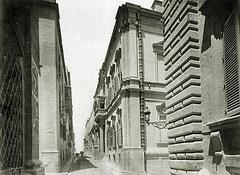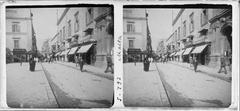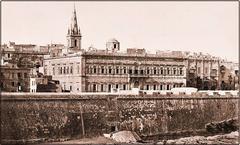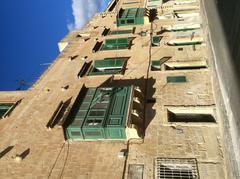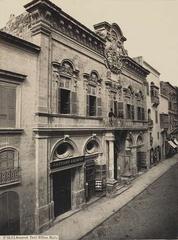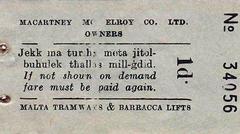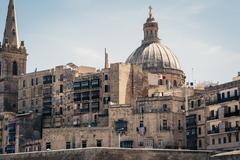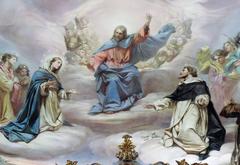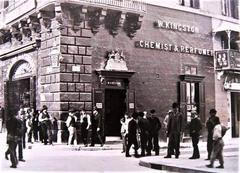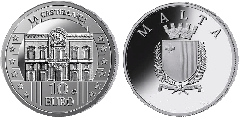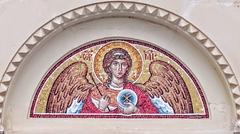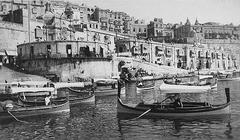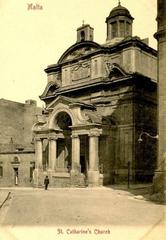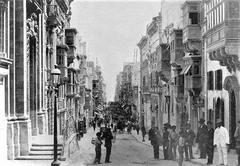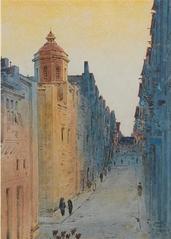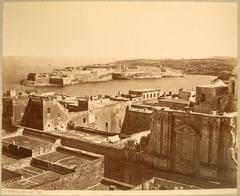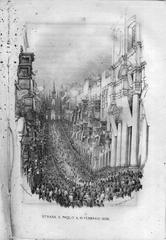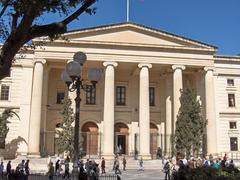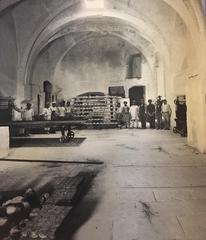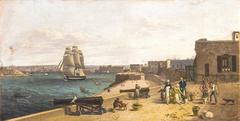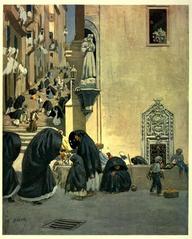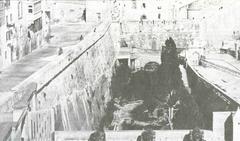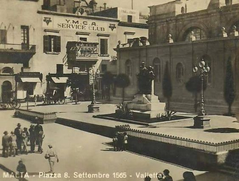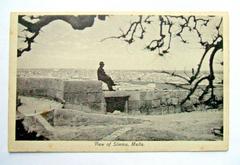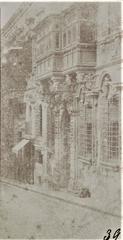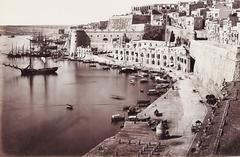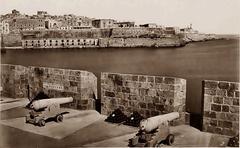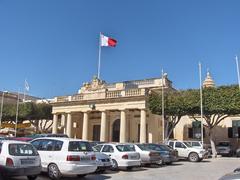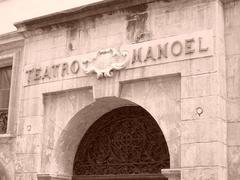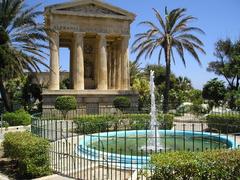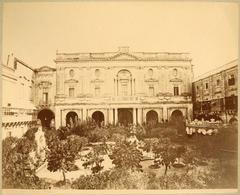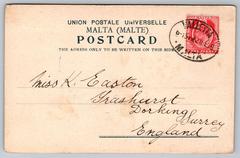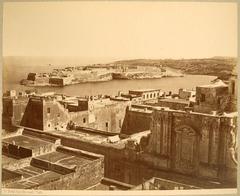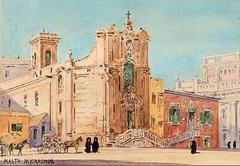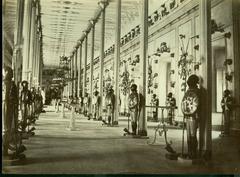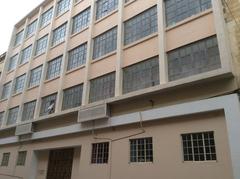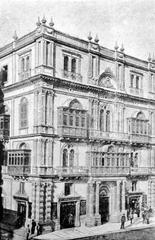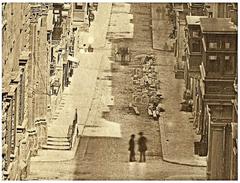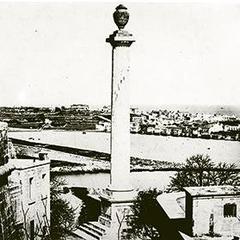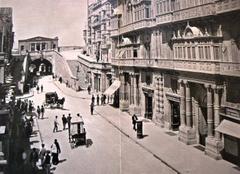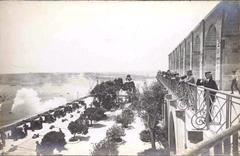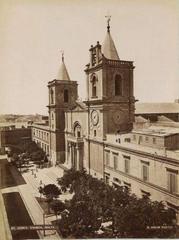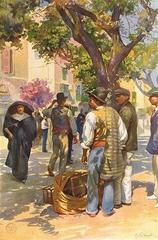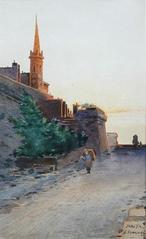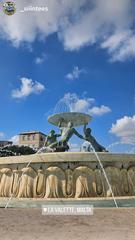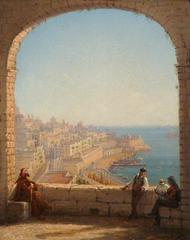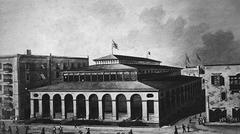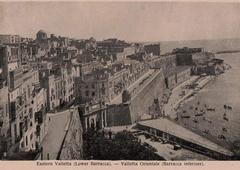Church of St Mary Magdalene Valletta, Malta: Visiting Hours, Tickets & Historical Sites Guide
Date: 15/06/2025
Introduction
Tucked away in the heart of Valletta, Malta’s UNESCO World Heritage city, the Church of St Mary Magdalene is a remarkable testament to the island’s enduring religious, social, and architectural legacy. Often overshadowed by Valletta’s grander basilicas, this church stands as a symbol of compassion, resilience, and cultural continuity. From its late 16th-century origins as a sanctuary for marginalized women to its contemporary revival, the church’s story weaves together themes of faith, social justice, and heritage preservation.
This guide offers an in-depth look at the Church of St Mary Magdalene for history buffs, architecture enthusiasts, and travelers interested in Malta’s spiritual and cultural landscape. Here, you’ll find detailed historical context, architectural highlights, visitor information, and practical tips to enrich your experience.
For authoritative insights and the latest updates, consult trusted sources such as Wikipedia, Times of Malta, and Visit Malta.
Table of Contents
- Introduction
- Historical Background
- Architectural Style & Features
- Symbolic & Cultural Significance
- Visitor Information
- Visitor Experience & Practical Tips
- Preservation & Community Engagement
- Frequently Asked Questions (FAQ)
- Conclusion
- References
Historical Background
Origins and Foundation
The Church of St Mary Magdalene was established in the late 16th century, during Malta’s period under the Knights of the Order of St John. Built around 1595, it served as the chapel for a Magdalene convent dedicated to offering refuge and spiritual guidance to marginalized women (Wikipedia). Its dedication to St Mary Magdalene—a biblical figure associated with repentance—reflects the church’s founding mission of redemption and compassion.
Patronage and Prominence
Through a papal decree in 1602, the convent received a fifth of the goods and estates of deceased prostitutes, making it one of Malta’s wealthiest religious institutions (Wikipedia). Grand Master Antoine de Paul supported further construction and embellishment in the early 17th century (Universes in Universe), solidifying the church’s prominent place within Valletta’s religious landscape.
Social and Religious Role
For over two centuries, the Magdalene nuns were integral to Valletta’s social fabric, providing sanctuary, education, and spiritual guidance. Their strict enclosure and dedication to prayer exemplified the contemplative life, while their charitable activities embodied the church’s social mission (Universes in Universe).
The convent’s influence waned during the 1798 French occupation, when its assets were confiscated, and the order was dissolved. The last Magdalene nun passed away in 1846 (Wikipedia).
Wartime Damage and Decline
The church suffered severe bomb damage during World War II; its adjacent monastery was destroyed and later replaced by a school. Afterward, the church was neglected and repurposed for storage until 2006 (Times of Malta).
Restoration and Modern Revival
Restoration commenced in 2008, culminating in the church’s re-blessing in 2015. The site is now protected as a Grade 1 national monument and has become a venue for art installations, cultural events, and religious celebrations (Times of Malta; Wikipedia).
Architectural Style & Features
Exterior
The Church of St Mary Magdalene exhibits a restrained Mannerist façade with square proportions and minimal ornamentation, reflecting the contemplative ethos of the convent it once served. The central bay is framed by a simple stone architrave, with subdued decorative elements contrasting Valletta’s more ornate Baroque churches (Wikipedia).
Interior
Inside, the church displays Baroque influences in its altars and decorative details, offering a sense of solemnity and intimacy rather than grandeur. The square layout and whitewashed walls enhance natural light, and the focus is on the main altar, traditionally adorned with iconography of St Mary Magdalene. Marble slabs and commemorative plaques near the entrance highlight its historic role (timesofmalta.com).
Conservation and Restoration
Constructed from local Globigerina limestone, the church’s conservation requires ongoing efforts to mitigate the effects of weathering and past neglect. Restoration projects have aimed to stabilize and preserve original features, ensuring the site’s historical integrity (Times of Malta).
Symbolic & Cultural Significance
Religious and Social Impact
The church’s association with the Magdalene convent and asylum underscores the Catholic tradition of social outreach in Malta. Its mission to serve women in need exemplified values of mercy and dignity that have shaped Maltese religious culture (palazzoprecavalletta.com).
Artistic and Festive Heritage
Though modest, the church contributes to Valletta’s diverse architectural landscape. It is often included in religious processions and city-wide festivals, enriching the city’s spiritual life even if it does not host its own major festa (malta.com).
Integration in Maltese Catholicism
Valletta’s 28 historic churches each play a role in community identity. The Church of St Mary Magdalene’s legacy highlights the broader Maltese commitment to faith, charity, and the preservation of cultural patrimony (Wikipedia).
Visitor Information
Visiting Hours
- Regular Opening: Monday–Saturday, 9:00 AM to 5:00 PM
- Closed: Sundays and public holidays
- Note: Hours may vary during restoration, special events, or religious ceremonies. Always check official tourism or parish websites before visiting.
Tickets and Admission
- Entry Fee: Free
- Donations: Welcomed to support maintenance and ongoing restoration
Accessibility
- Wheelchair Access: Ramps at entrance; some cobblestone streets nearby may require assistance
Getting There
- Location: Central Valletta, easily accessible on foot from city landmarks such as St John’s Co-Cathedral and Upper Barrakka Gardens
- Transport: Public buses serve Valletta’s city center; limited parking available
Guided Tours
- Included in many guided walking tours of Valletta’s religious and architectural heritage. Advanced booking is recommended for special access or group visits.
Photography
- Allowed without flash; tripods are usually not permitted. Restrictions may apply during services.
Special Events
- The annual feast of St Mary Magdalene is celebrated in July, featuring religious services and community gatherings (Times of Malta).
Visitor Experience & Practical Tips
- Best Time to Visit: Early morning or late afternoon for peaceful ambiance and optimal lighting.
- Dress Code: Modest attire is required.
- Etiquette: Silence is appreciated; mobile phones should be on silent. Follow posted guidelines regarding photography and access during restoration.
- Nearby Attractions: Consider combining your visit with St John’s Co-Cathedral, Our Lady of Victory Church, and the Grandmaster’s Palace for a comprehensive exploration of Valletta’s religious heritage (Love Malta).
Preservation & Community Engagement
The church’s Grade 1 scheduling has inspired active community involvement, including clean-up days, fundraising, and public education initiatives. Preservation is a collaborative effort, with support from government, local heritage organizations, and visitors (Times of Malta).
Frequently Asked Questions (FAQ)
Q: What are the visiting hours of the Church of St Mary Magdalene?
A: Monday–Saturday, 9:00 AM–5:00 PM. Closed on Sundays and public holidays. Hours may vary during restoration or events.
Q: Is there an entrance fee or tickets required?
A: Entry is free; donations are welcome.
Q: Is the church wheelchair accessible?
A: Yes, with ramps at the entrance. Some nearby areas may be challenging due to cobblestones.
Q: Are guided tours available?
A: Yes, many Valletta heritage tours include the church.
Q: Can I take photos inside the church?
A: Yes, without flash. Restrictions may apply during services or ongoing restoration.
Q: How do I get to the church?
A: Centrally located in Valletta, easily reached on foot or by public transport.
Conclusion
The Church of St Mary Magdalene in Valletta is more than a historical monument; it is a living symbol of Malta’s religious devotion, social compassion, and architectural tradition. Its journey from a sanctuary for marginalized women to a restored cultural landmark mirrors Malta’s own story of resilience and renewal. Whether you are drawn by its history, its architecture, or its quiet beauty, a visit to this church offers a meaningful connection to the island’s past and present.
Before your visit, check current opening hours, event schedules, and restoration updates with official tourism platforms. To deepen your experience, download the Audiala app for personalized guidance and explore more of Valletta’s rich religious heritage.
References & Further Reading
- Church of St Mary Magdalene, Valletta, Wikipedia
- Feast of St Mary Magdalene celebrated in Valletta, Times of Malta, 2021
- One World: Protecting the most significant buildings, monuments and sites in Malta, Times of Malta, 2017
- Church of St Mary Magdalene Malta, Visit Malta
- The Island of Churches: Exploring Malta’s religious and architectural heritage, Palazzo Preca Valletta
- Mystical visions, time and tension, Times of Malta, 2023
- Malta Itinerary: Dingli Cliffs and Church of St Mary Magdalene, The Whole World is a Playground
- 8 Churches to Visit in Valletta, Love Malta
- A Forgotten Memorial, Times of Malta
